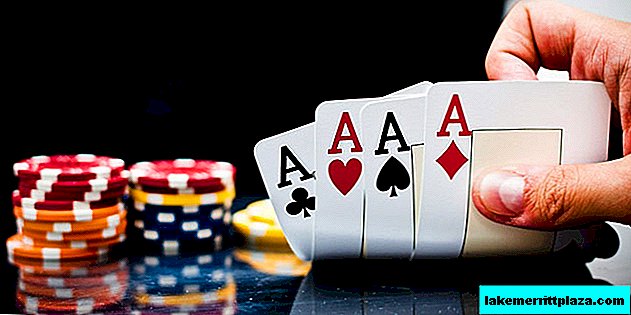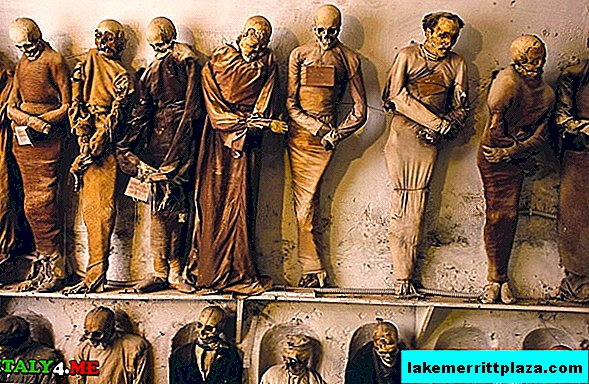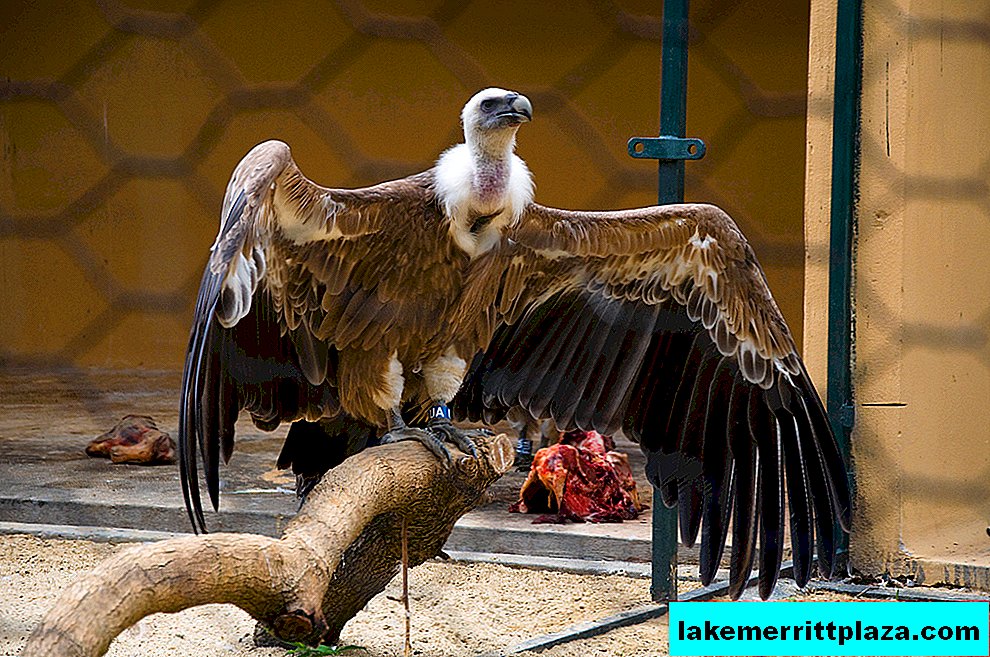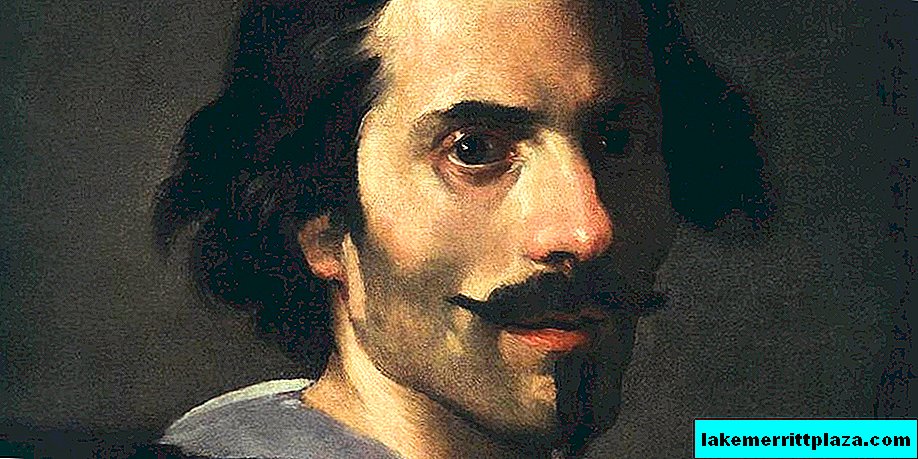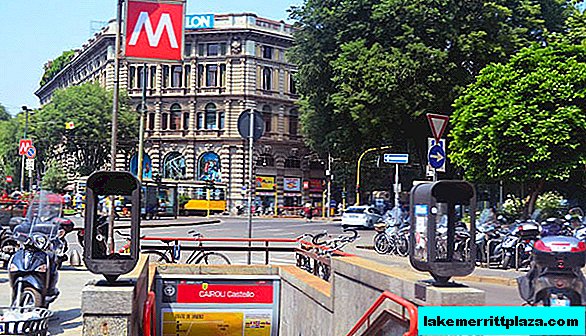The tomb of the emperors, a formidable fortress, a refuge, a prison, a papal residence and a papal treasury ... Among the Roman architectural sights, the Castle of Saint Angel is considered one of the most interesting buildings with a rich history, inextricably linked with the most important stages of the history of Rome in the new era.
... The Roman emperor Hadrian (reign: 117-138) was distinguished by an extraordinary love of travel. However, his long trips were not always of an inspection or military nature.
Double bottom mausoleum
In 130, while in Egypt, the emperor expressed his desire to visit the so-called monument of the singing Memnon (funerary statues of Amenhotep III, one of the legendary pharaohs). The monument was then in the Theban Necropolis, on the west bank of the Nile (the bank of the dead).
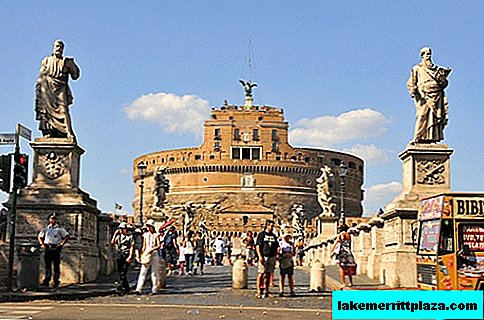
The imperial tomb was conceived by Adrian in 135
After five years, Adrian ordered the construction of a mausoleum on the right bank of the Tiber. This was not unusual: most of the rulers of the ancient world cared about the construction of a structure where their mortal remains were stored, long before death.
Unusual, in the opinion of contemporaries, was the choice of a place for construction. It would be logical if Adrian, who had previously imitated Octavian Augustus in everything and wanted to surpass him, if not in earthly, then in posthumous glory, gave the order to erect the mausoleum in the same place where his great predecessor had been resting for more than a century. That is, on the left bank of the Tiber, on the Field of Mars.
The whole matter was partly in the emperor’s desire to somehow “balance” the chaotically located burials on the outskirts of Rome, and partly in the desire to pay a kind of tribute to his beloved Antinous.

Hadrian's bridge provided the emperor with a quick crossing over the Tiber
Antinoy died during a trip to Egypt literally in the eyes of Hadrian and was buried according to Egyptian custom on the west bank of the Nile. The territory on the right bank of the Tiber in Rome, where a year after the death of the emperor was completedMausoleum of Hadrianlocated in the west. And this territory was called ... Ager Vaticanus.
Despite the rather unusual location for burials of this level, the Adrian Mausoleum had a rather traditional form - the shape of the Etruscan tumulus (burial chamber with a domed loose top). Each side of the square base of the tomb was 84 m long. The diameter of a cylinder 20 m high installed on this base was 64 m.
From above, on a loose hill, a statue of Helios, the god of the Sun, governing the quadriga, was erected. In the burial chamber, which leads to a spiral gallery, there were urns with the ashes of emperors and members of their families - from Adrian to Septimius Severus (reign: 193-211).
Castle of the Holy Angel: popes and their stormy activities
Its modern name is Hadrian's Mausoleum - Castle of the Holy Angel - received in connection with the next plague epidemic, from which Pope Pelagius II died prematurely (years of the pontificate: 579-590).
His successor, Gregory I the Great (years of the pontificate: 590-604), not having time to accept the tiara, for several days walked at the head of the penitential procession, begging the Lord for deliverance from the pestilence. According to legend, over the dome of the former imperial bastion mausoleum, the pope and his associates saw the figure of the Archangel Michael, sheathing a punishing sword.
Passionate prayers were heard: the Lord spared the city, and the plague receded. The building was dedicated to the Archangel Michael, whose cult was already in the X century. spread throughout Europe, but the status of the castle received only by the XII century.

Statue of St. Michael the Archangel stands today in the courtyard
Around the XIII centuries., The papal region, which finally gained independence from the emperors of the Holy Roman Empire, received the inalienable right to dictate its conditions to other monarchs. However, the popes still did not forget about their own safety, constantly strengthening Castle of the Holy Angel and connecting it with the Vatican Passeto (hidden corridor) in the Leoninsky wall surrounding their residence. The Castle of Sant'Angelo in Rome became, therefore, also one of the parts of the residence of the pontiffs.
However, he was too much for the Roman aristocracy. In the Papal region, starting from Rome itself, feudal feuds began, and often the borders between the territories of influence of one and the other family ran literally in the middle of the same street. Sant Angelo Castle they either captured Orsini, then Pierleoni, then Crescenzi, ascending the throne and the pope of his kind.
The French king Philip IV the Beautiful (reign: 1285-1314), whose iron will helped him to rearrange the pontiffs, put an end to this for a while, and transferred the residence of the popes to Avignon. In the XIV century., During the "Avignon capture", the Castle of the Holy Angel temporarily lost its significance, but it was in it in 1377 that the ceremony of the return of popes to the Roman throne was held.

From the Castle to the Vatican one could walk along the corridor in the wall
In the XV century. The Castle of the Holy Angel in Rome literally survived its rebirth as a reliable fortress. In addition to the already mentioned passets, he acquired new bastions. The most famous project of this kind was a project from the "glorious" Pope Alexander VI Borgia, who ordered the construction of 4 impregnable outposts (in honor of the four evangelists). He also ordered to arrange luxurious apartments in the walls of the castle to celebrate the victories of his son Cesare.
Do not deny yourself the pleasure to complement Castle of the Holy Angel Rome small, but fortified with the latest technology apartments, and other popes, who ruled in the XV-early XVI centuries. Moreover, countless treasures of tiara were also stored in reliably protected secret dungeons of the fortress.
Castle of the Holy Angel: war, robbery and adventure
At the beginning of the XVI century. Dad’s calm was again disturbed. This time, the French king Francis I (years of reign: 1515-1547) and Charles V of Habsburg (emperor of the Holy Roman Empire in 1520-1558) decided to find out which of them was the main one on the Apennine peninsula. In 1527, it came to the plunder of Rome.
Before this for 2 months Castle of the Holy Angel was a reliable shelter for Pope Clement VII (years of the pontificate: 1523-1534). But the forces were unequal, and the pope eventually had to pay a huge ransom and abandon the rights to some provinces in favor of Charles V.

Storage room for the treasury and church archives
The guardian of the treasury at that time was the famous jeweler and sculptor Benvenuto Cellini. According to his version, it was he who shot Charles de Bourbon, the former French connetable who had crossed over to the Imperials, for some time bringing confusion into the enemy’s troops. Whatever the case, 4 years later Cellini had to get acquainted with the dungeons that the Castle was famous for Sant Angelo, somewhat on the other hand.
At first, after accusing him of stealing jewelry while issuing a ransom for his father, he was put in a regular cell. From it, he, the only one among all the prisoners of the fortress, was able to escape, using the ropes tied from strips of sheets.

Castle of the Holy Angel, Courtyard of Alexander VI
The escape was not very successful: the jeweler incorrectly calculated his location and was at the double ring of walls. Overcoming an obstacle, he broke his leg, was caught and put in a half-flooded dungeon teeming with rats and insects, but he was able to survive, leaving there only in 1539.
The walls of the castle are also remembered by other famous prisoners: Galileo, who went out of the cell to the auto-da-f¸ where he was graciously forgiven; Giordano Bruno, who was destined to a more severe punishment; Giuseppe Balsamo (aka Count Cagliostro), who replaced Castle of the Holy Angel in Rome on the conclusion of the mountain castle of San Leo, where he ended his days.
Castle of the Holy Angel: our days
Today Castle of the Holy Angel Rome continues to be one of the treasures of the popes. The museum on its territory was opened in 1911. In recent years, Sant'Angelo Castle has become popular as a venue for various light and laser shows in honor of various national, sports and cultural events.

Paolins Hall hosted foreign ambassadors and important guests
Tourists who decide to visit him can choose several routes through the castle-museum. This can be a tour of the fortifications, including the passeto to the Vatican, a walk through the courtyards named after the popes and the Holy Angel proper with a huge marble statue installed in it (6th in a row, starting from the 16th century). A visit to the interior of the castle is also possible, but not all.
So, groups and single tourists can easily get acquainted with the collection of sculptures and part of the collection of paintings in the papal apartments, as well as with exhibits from the armory. However, jewelry and ceramics, which is rich Sant Angelo Castle, can only be seen during themed exhibitions.
Opening hours and tickets
The schedule of the Castle depends on the time of year. From September 18 to June 23, it accepts visitors from Tuesday to Sunday from 9:00 to 19:30. The cash desk closes at 18:30.
From June 24 to September 17:
- Tue-Wed: 9: 00-19: 30. Cash desk closes at 18:30
- Thu-sun: 9: 00-24: 00. Cash desk closes at 23.00
Castle of the Holy Angel is closed to visitors on Mondays, January 1, May 1 and December 25.
Adult ticket to the castle costs 14 Euros. In the museum you can buy an audio guide, including in Russian.
How to get there
You can get to the castle by taking buses 23, 62, 271, 280, 982 (stop "Piazza Pia"); 34 (stop "Via de Porte Castello"); 49, 87, 926, 990 (stop "Piazza Cavour"). You can also easily walk here in 10 minutes by foot from St. Peter's Square or Piazza Navona. Exact address: Lungotevere Castello, 50, 00193 Roma.
To easily find the Castle in Rome itself - install our mobile guide to the Eternal City on your phone. It has an online map with all the most significant objects of the city, their description and mode of operation. You can learn more about the application and install it on your smartphone on this page.
If you wish, you can visit the Castle of the Holy Angel with an organized tour or an individual guide. Details of such programs can be found in Lela, an expert on Rome, whom BlogoItaliano wrote about in an article Guide to Rome: his man in the Eternal City.
Useful articles about Rome:
- The most romantic hotels in Rome: TOP 5 according to BlogoItaliano
- Sistine Chapel and Vatican Museums: Things to Know
- Colosseum in Rome: the largest amphitheater of the Ancient world
- Borghese Gallery: Rome's most coveted and inaccessible museum
- Roman Forum: the ancient heart of the Eternal City
Photos by: Christopher Chan, M. Àngels Payró, FaceMePLS, Daniel Pietzsch, Mark Turner, tisamsebegid.ru, beniculturali.it, Enrique Viola.

